Obelisk Macuteo – divine support for the emperor, the pope and the Roman populace
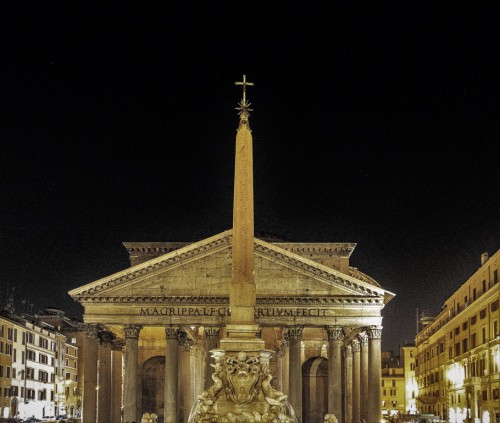
Macuteo Obelisk with the Pantheon in the background
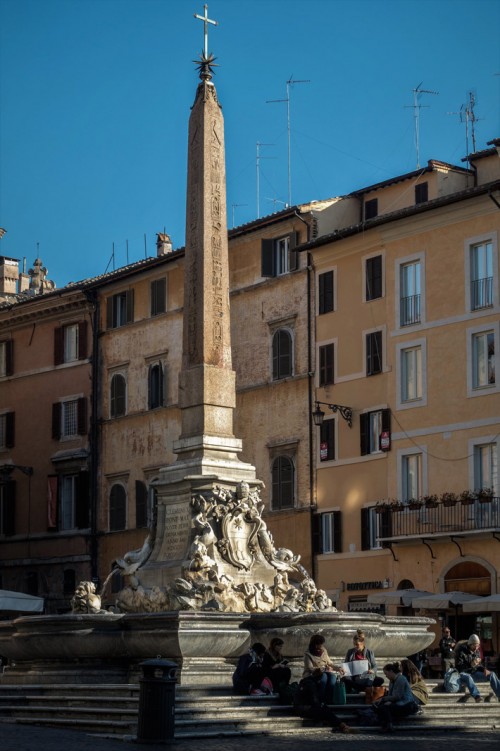
Fontana della Rotonda with the Macuteo Obelisk on top
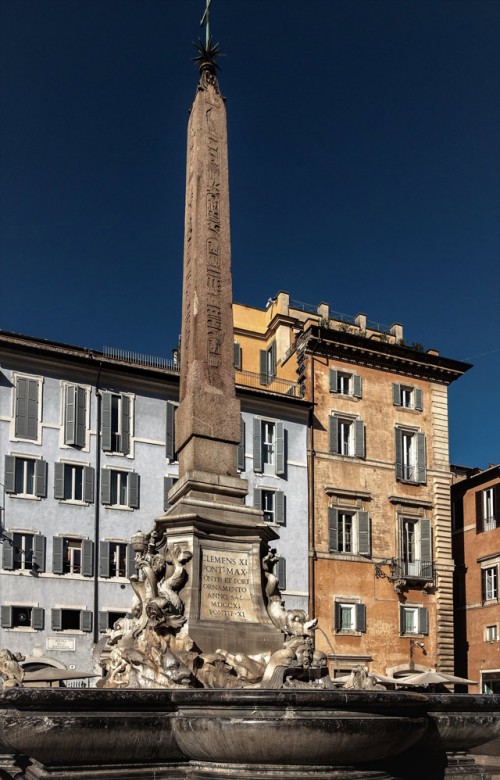
Piazza della Rotonda, Macuteo Obelisk
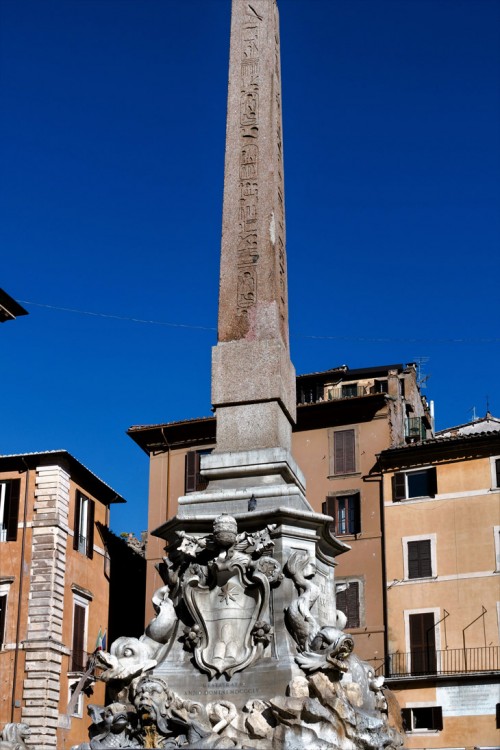
Macuteo Obelisk at the top of the fountain on Piazza della Rotonda
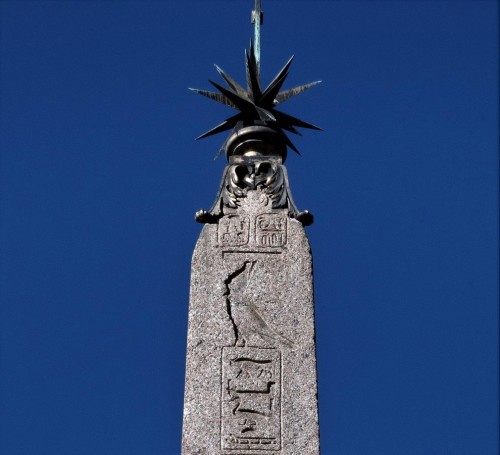
Pyramidion of the Macuteo Obelisk on Piazza della Rotonda
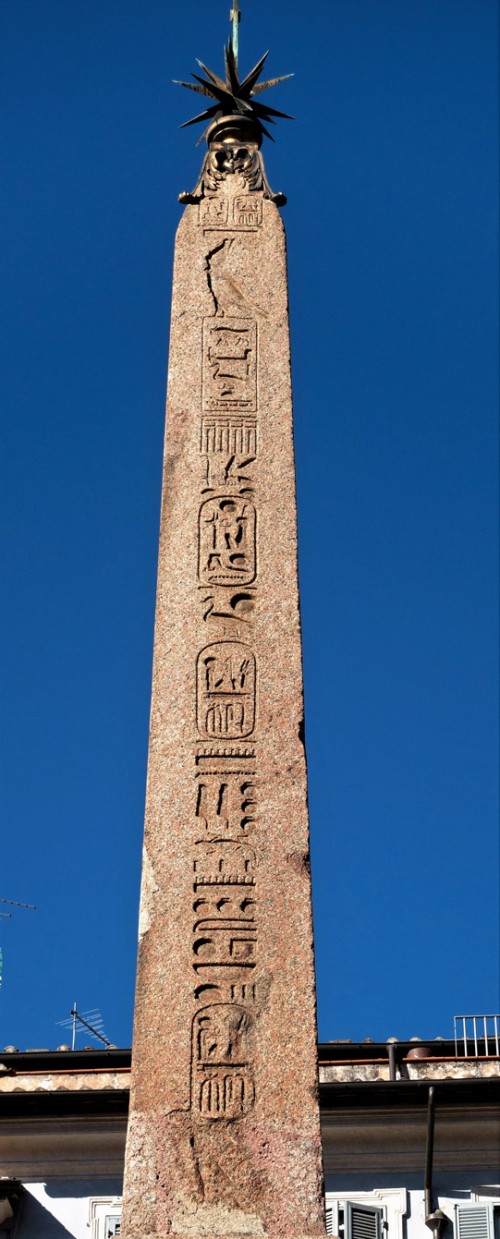
Macuteo Obelisk topped off with a cross and star of Clement XI
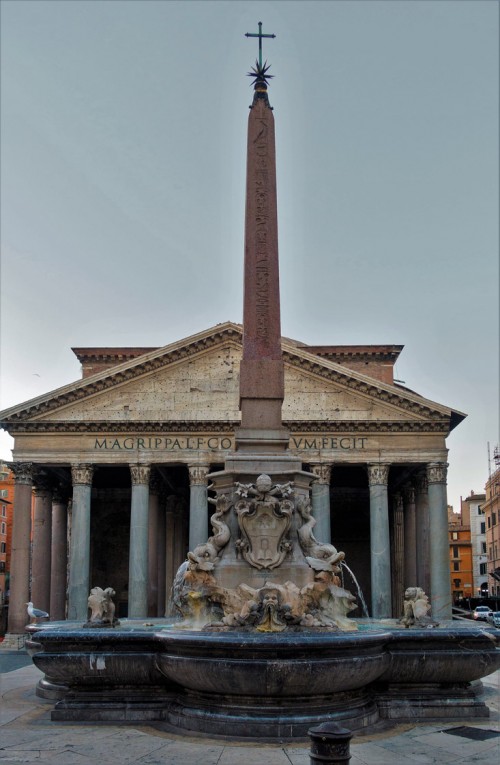
Piazza della Rotonda, fountain with the Macuteo Obelisk
In the center of Piazza della Rotonda there is a beautiful fountain, of which the construction lasted for centuries on end. At the start of the XVIII century Pope Clement XI decided to clean up the area of the square, while also enhancing the existing water pool with a new artistic creation, which was accentuated by an Egyptian obelisk. But, is it really Egyptian? This we do not know for certain, but we are more than willing to believe it.
In the center of Piazza della Rotonda there is a beautiful fountain, of which the construction lasted for centuries on end. At the start of the XVIII century Pope Clement XI decided to clean up the area of the square, while also enhancing the existing water pool with a new artistic creation, which was accentuated by an Egyptian obelisk. But, is it really Egyptian? This we do not know for certain, but we are more than willing to believe it.
Its size is not exceptionally imposing, since it is only 6.34 meters high. It was built out of pink granite and adorned with hieroglyphs. It is assumed that it dates back all the way to the years 1279-1213 B.C., and it was made at the behest of Pharaoh Ramses II and placed in the Temple of Ra in Heliopolis, where it adorned the courtyard, together with Matteiano, another obelisk, which is also presently located in Rome. During Roman times, when Egypt became part of the great empire, Heliopolis with its temples fell into ruin, while after Cleopatra visited Rome, the fashion for all things Egyptian filled the hearts of ancient emperors. Special renown and admiration was enjoyed particularly by obelisks. Why? The answer is provided by Emperor Octavius Augustus himself, who placed them in representative locations in Rome for his own greater glory, but also with the thought of the protective properties of the Sun, which the obelisks symbolized.
And the obelisk, thanks to the intercession of Egyptian deities was to bring prosperity to the inhabitants of the Roman empire. Initially, most likely during the reign of Emperor Domitian, it was placed along with its twin, probably in the complex of the Temple of Isis and Serapis (Iseum Campense), found near the present-day Basilica of Santa Maria sopra Minerva. It adorned it, along with other Egyptian obelisks (numbering thirteen), for centuries, then felled and useless during Christian times, lay under a layer of earth for centuries, until it was discovered during construction works in 1373. However, it was not until 1575 that it was put up, most likely approximately 200 meters east of the Pantheon, near the Church of San Macuto (Piazza San Macuto), from which it acquired its name. A definitely more representative location, was found for it by the aforementioned Pope Clement XI, who, desiring to add to the fountain (Fontana del Rotonda) on Piazza della Rotonda, in 1711 entrusted work on it to his architect – Filippo Bargioni. He, in the image of an already existing fountain on Piazza Navona (Fontana del Quattro Fiumi) placed it on a shaft reminiscent of a rocky cliff and adorned it with a multi-pointed star (an emblem taken from the papal coat of arms), as well as a cross.
The obelisk pyramidion, meaning the pyramid at its top, is decorated with cartouches with the name of Ramses II, however we do not know for sure, whether it truly dates back to Biblical times and if it was brought to Rome in the II century, or as it was often the case, was made at the emperor’s wish, constituting a kind of a forgery, justified by – the exhibited by the Romans – great attention paid to these types of objects.






















